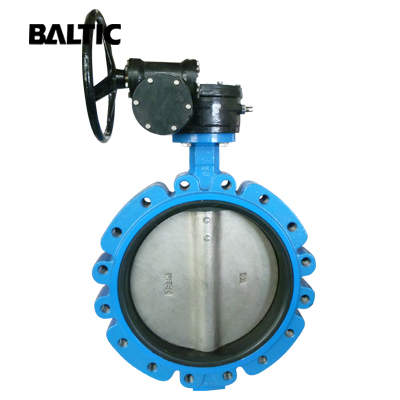Comparison Between Wafer-style and Flanged Butterfly Valves
Butterfly valves are not only widely used in general industry such as petroleum, gas, chemical industry and water treatment, but also used in the cooling water system of a thermal power station. The butterfly valve can be divided into wafer-style one and flanged one. For the flanged butterfly valve, flanges are set at both inlet and outlet ends of the valve body and they are connected with pipe flanges. For the wafer butterfly valve, there are no flanges at both inlet and outlet ends of the valve body, but only a few guide bolt holes. The wafer type butterfly valve is cheap and light. During selection of imported valves, use wafer-style ones as far as possible, for it is cheap.
The bolts of the wafer valve are long, and high construction precision is required. If the flange bolts on both ends of the valve body are misaligned, the bolts will be subjected to a large shear force, and the valve is easy to leak.
In contrast, the wafer butterfly valve is easier to disassemble. Besides, the valve cost is relatively low. However, the disadvantage is that one seal surface is out of order and both seal surfaces have to be disassembled.
Flanged butterfly valves are relatively more reliable in sealing, but the cost of the valves is relatively high.
Generally, the wafer butterfly valve cannot be used in the situation where the flange need to be dismantled at the downstream of the pipeline, because when the flange is disassembled, the wafer type valve will fall down. In this case, it is necessary to make a nipple for easy disassembly of the flange. The flanged butterfly valve does not have the above problems, but the cost will be relatively high.
Wafer type valve bolts are generally long, and under high temperature conditions, bolts may cause valve leakage after expansion, so they are not suitable for large diameter pipes under high temperature conditions.

The bolts of the wafer valve are long, and high construction precision is required. If the flange bolts on both ends of the valve body are misaligned, the bolts will be subjected to a large shear force, and the valve is easy to leak.
In contrast, the wafer butterfly valve is easier to disassemble. Besides, the valve cost is relatively low. However, the disadvantage is that one seal surface is out of order and both seal surfaces have to be disassembled.
Flanged butterfly valves are relatively more reliable in sealing, but the cost of the valves is relatively high.
Generally, the wafer butterfly valve cannot be used in the situation where the flange need to be dismantled at the downstream of the pipeline, because when the flange is disassembled, the wafer type valve will fall down. In this case, it is necessary to make a nipple for easy disassembly of the flange. The flanged butterfly valve does not have the above problems, but the cost will be relatively high.
Wafer type valve bolts are generally long, and under high temperature conditions, bolts may cause valve leakage after expansion, so they are not suitable for large diameter pipes under high temperature conditions.




